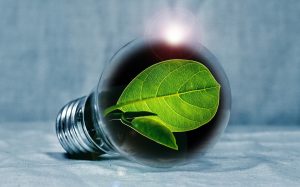 If you’re a contractor, engineer, or a manufacturer or sales rep for HVAC components, you know not all HVAC systems are created equal. However, the people who need to purchase components or have them installed may not be as well-versed.
If you’re a contractor, engineer, or a manufacturer or sales rep for HVAC components, you know not all HVAC systems are created equal. However, the people who need to purchase components or have them installed may not be as well-versed.
Throwing concepts at them such as EER, SEER, and HSPF is one way to explain what they stand to gain or lose with various levels of HVAC efficiency. Only, these terms might sound like Greek to the layperson. So, here are some pointers on how to explain these efficiency metrics….
SEER:
Standing for Seasonal Energy Efficiency Ratio, this efficiency rating measures cooling efficiency during summer.
 You’ll find government-required SEER labeling on air conditioning units and heat pumps. The number (the higher the better) depicts how effectively your unit uses energy to keep you cool, and how well it saves energy.
You’ll find government-required SEER labeling on air conditioning units and heat pumps. The number (the higher the better) depicts how effectively your unit uses energy to keep you cool, and how well it saves energy.
The SEER is calculated by comparing how much cooling power an air conditioner provides (measured in BTUs) during a cooling season to how much energy it consumes (measured in watt-hours (Wh)). This comparison is done over a set period of time in a controlled laboratory environment where indoor and outdoor temperature varies by only 2 degrees. The resulting SEER relies on the outcome of at least two, if not four tests—with the results of only one test being revealed to the public.
Tests are performed on the entire system, not just the unit in question, since merely upgrading one element of the cooling system (outdoor unit, furnace, indoor coil) is a not a guarantee of better efficiency.
It’s important to know that the SEER rating from these lab tests might not perfectly match what happens in a real home or building where differing temperatures, humidity levels, and other factors affect energy use. So, while SEER offers a good idea of efficiency, that efficiency will not necessarily translate to every application.
These days, you want a minimum SEER rating of around 13 to 14, depending on where you live and the type of equipment. The best ones can hit up to 25.
SEER = BTUs of cooling output during a season / Watt-hours of energy used during that season
HSPF
HSPF or Heating Seasonal Performance Factor takes on the colder season, measuring the efficiency of heat pumps when people want comfort indoors despite a chilly day. As the counterpart to SEER, this rating considers any necessary supplemental energy such as defrosting in addition to the initial electrical energy consumed by the system.
despite a chilly day. As the counterpart to SEER, this rating considers any necessary supplemental energy such as defrosting in addition to the initial electrical energy consumed by the system.
Used to rate heat pumps in heating applications, the HSPF lets people know how effective the component is in conserving energy and reducing greenhouse gas emissions. Consumers can create cozy, comfortable indoor environments while lowering their carbon footprint by selecting heat pumps with high HSPF ratings. Some agencies encourage minimum HSPF requirements to help us do exactly that.
HSPF is calculated as….
HSPF = Total Heat Output (BTUs) / Total Electricity Consumption (kWh)
EER
The Energy Efficiency Ratio (EER) measures efficiency of heating, ventilation, and air conditioning (HVAC) systems in a specific moment. In other words, how cool is your AC keeping you around noon inside on a scorcher of a summer day? More specifically, it represents the ratio of the cooling capacity of an air conditioner to its power consumption. The higher the EER, the more efficiently the system makes use of energy. The key value in paying attention to EER is knowing how well your system can reduce electricity bills and your carbon footprint according to how much it reduces electrical consumption. Want to save money and help reduce Greenhouse gas emissions? Paying attention to EER can get you there.
EER is calculated as….
EER = Total cooling or heating capacity (BTUs) / Total electrical power consumed (Wh)
EER and the ERV.
Now, because Energy Recovery Ventilators are our thing, we’d like to point out that the energy efficiency ratio is applicable to ERVs as well. Sure, they work differently from air conditioning and heat pump systems since these air-to-air units work to exchange heat and moisture in lieu of simply adding cooler or warmer air to an HVAC system. Still, the EER can evaluate the system’s effectiveness in exchanging heat and moisture between indoor and outdoor air. It answers the question, “How effectively can this ERV perform the heat exchange process?”
In a world where the standard EER for HVAC components and systems is generally 10, very high efficiency ERVs such as the BPE product line can attain EERs that run typically over 60 and range from 36 to 160.
How do high-efficiency ERVs do this? When you use a very high efficiency fan, the power consumption, even for attaining air exchanges of 110 cfm, can be less than a 20-Watt light bulb. When you combine these fans with a high-efficiency direct counter-flow heat exchanger, we find that you can get fan efficiencies as high as 0.2 Watts/cfm. This is much better than the traditional 5 to 10 Watt/cfm—resulting in a large improvement in energy efficiency.
Abracadabra! High-efficiency ERVs can become more efficient in extreme temperatures than a heat pump.
Most HVAC energy recovery components are considered nonlinear. If an HVAC component is described as ‘linear,’ it means that its efficiency, measured by its Energy Efficiency Ratio (EER), either remains consistent across various operating conditions OR it changes predictably across those same varying conditions.
BPE ERV units can be considered linear in efficiency whereas a heat pump would not. Let’s say, it’s 15-degrees F outside and the ERV is saving 2,000 BTUs via energy recovery. A heat pump, many of which will start losing 100% efficiency as outdoor temperatures dip below 40-degrees F, will lose that efficiency to varying levels as it struggles to meet the desired temperature on the thermostat. Pump up the thermostat, the unit might rally but not hit the desired temperature. Meanwhile, the ERV? It’s more effective than the heat pump in extreme temperatures. We know we can count on an increase in efficiency when the temperature decreases further. It will save 4,000 BTUs coping with -40 degrees F.
Now, an ERV does not create heat or cooling energy—that’s the job of a primary heating and cooling source. It does, however, recover energy and reuse it. For example, during the brunt of winter—say 10-degrees F, some schools will heat their building in the morning, then rely on a BPE energy recovery unit to recycle body heat from the students to keep everyone comfortable rather than pull more energy from the furnace. Another option is a very efficient multi-room heat pump that uses VRV (Variable Refrigerant Volume) or VRF (Variable Refrigerant Flow).
The BPI (Building Performance Institute) has verified that the engineering that goes into BPE ERV units reduces energy consumption in carefully designed and built buildings by as much as 90%. Such efficiency can eliminate GHG pollution via all- electric HVAC and normal conservation. Now that it is clean air everyone can enjoy breathing!

